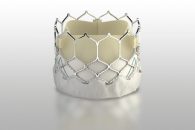Transcatheter aortic valve replacement (TAVR) has been proving its benefit in different scenarios for two decades now. However, in the field of self-expanding valves, one challenge has always been its high rate of pacemaker implantation compared with balloon-expandable devices and valvular replacement surgery. For this reason, the high implantation or Cusp Overlapping strategy was developed.…
Clinical Impact of Coronary Artery Disease on Results After TAVR
Coronary artery disease (CAD) coexists with aortic stenosis in about half the patients who suffer the latter. These patients receiving antiplatelet therapy are at a higher risk of periprocedural bleeding—one of the most frequent complications in patients who undergo transcatheter aortic valve replacement (TAVR). One way of limiting the risk for bleeding is choosing the…
Percutaneous Access Closure in TAVR: Are Devices Similar?
One of the challenges that transcatheter aortic valve replacement (TAVR) continues to face is percutaneous access closure with percutaneous closure systems (PCS). However, several systems have been developed, either by plug—such as the MANTA system—or by suture (SU)—such as the ProStar and ProGlide systems. Both of these have been tested in different analyses, but to…
Prosthesis Mismatch in TAVR: It’s Real Impact
Prosthesis-patient mismatch (PPM) was initially proposed by Rahimtoola and reintroduced by Pirabot. PPM is the indexed effective orifice area in relation to body surface area, cutoff value being 0.85 cm2/m2, and <0.70 cm2/m2for obese patients. PPM is considered moderate if indexed effective orifice area is 0.65-0.85 cm2/m2 and severe when <0.65 cm2/m2 Research studies on surgical prosthesis have…
When Is It Best to Fracture a Bioprosthesis in TAVR?
At present, surgical aortic valve replacement (SAVR) uses bioprostheses. However, when these fail, we are presented with a great challenge, seeing as repeat SAVR involves a higher risk. In this context, valve-in-valve (V-in-V TAVR) has surged as a very attractive alternative. Bioprosthesis fracture (BPF) is a new interesting strategy that has shown lower gradient and…
TAVR: Vascular Access in Patients with Peripheral Artery Disease, 1-Year Outcomes
At present, the transfemoral access (TFA) is the preferred approach when it comes to transcatheter aortic valve replacement (TAVR). However, 5 to10% of PAD patients present tortuous iliac anatomy and calcification, aortic aneurysms or prior peripheral intervention, which makes it impossible. There are several alternatives to approach these patients: 1) TFA associated to peripheral PCI…
ACC 2023 | TAVR in Low Risk Patients: 3-Year Outcomes
At present, transcatheter aortic valve replacement (TAVR) has become the gold standard in the US, regardless surgical risk. The current ACC and AHA guidelines recommend that a Heart Team make the decision for 65 to 80-year-old patients with aortic stenosis. In low risk patients, fast recovery and short term benefits of TAVR should be weighed…
Real-World Results of Different Devices for TAVR
Transcatheter aortic valve replacement (TAVR) keeps growing in terms of the development of new devices, more extensive operator experience, and enhanced procedure planning. Nowadays, there are multiple device options, which depend on patient characteristics and operator experience. Two-arm studies compared these devices, analyzing the potential benefits of a certain valve over the others. This multicenter…
Clinical Implications of the Presence of HALT in TAVR Patients: 5-Year Follow-Up
The duration of percutaneous aortic valve implants can be increasingly observed over time, regardless of their corresponding surgical risk. In the follow-up of different registries, the presence of subclinical valvular thrombosis, evidenced in tomographic studies as an increase in valvular thickness with hypoattenuation (a term known as HALT), was observed from protocolized images. This subclinical…
We Should Treat Significant Stable CAD in Patients Undergoing TAVR
Aortic stenosis is associated to significant coronary artery disease (CAD) in nearly 50% of cases. When we decide to treat aortic disease using surgery, it has been established we should also treat heart disease. However, when using transcatheter aortic valve replacement (TAVR), this is still unclear, given that in many occasions we see stable lesions…








